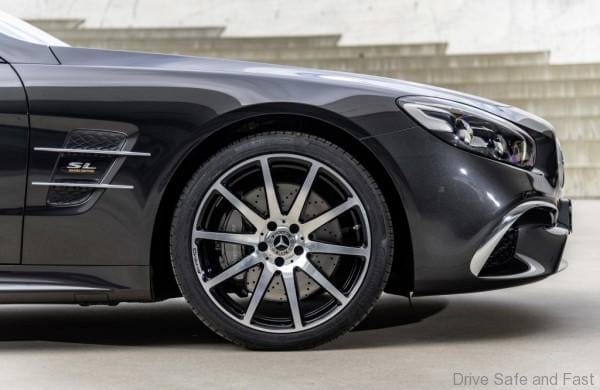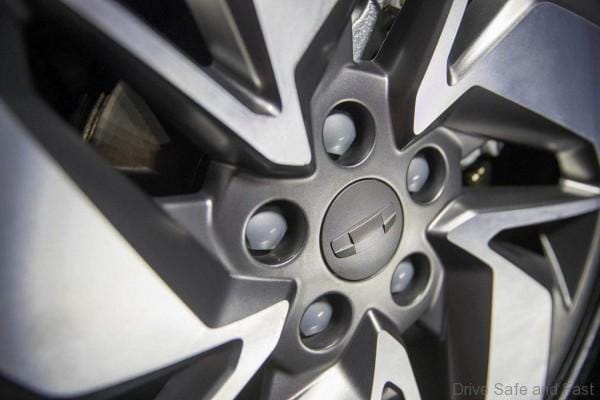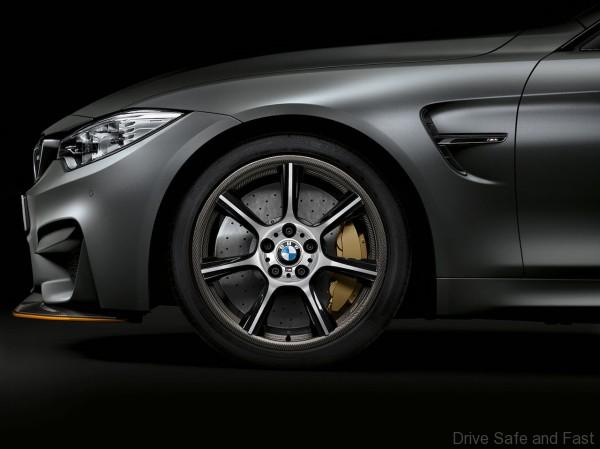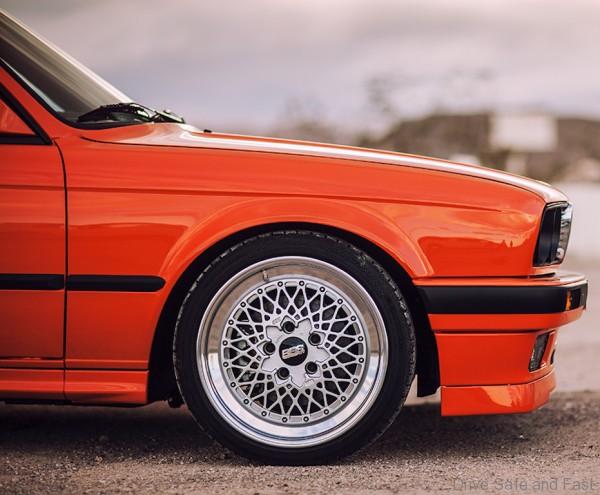Should You Buy Original Factory Wheels Or Aftermarket Alloys
We ask this question because we just got ourselves some used factory alloys wheels for our car and some friends suggested that we should have paid more and purchased brand new alloys.

We debated with them on the price discount for used alloys and the fact that we had a really good and reliable tyre shop specialist who is able to check the condition of used alloys and advice us properly if the alloys have been refurbished, fake or in good condition for our use.
Some elbow work to clean them, get them shod with new tyres and nobody will notice that there were used.
Yes, most car today have dented and damaged wheels due to the harsh road conditions that our cities have, but many car owners drive carefully avoiding all this road hazards, just like us and so a used set of alloy wheels should not be ignored until checked.

As explained by online automotive website www.automacha.com, If you are a follower of the latest trends in the auto industry over the past couple of years, you’ll probably pick up on the fact that the standard wheel size on cars have grown considerably in the past 10 years.
The sizes of wheels on cars nowadays are inconceivably huge. What was once a time not too long ago when 16 inches were considered massive, today even on cars at the cheaper end of the spectrum has massive wheel and tire combinations.
This sentiment rings especially true with the current crop of SUVs, like the Proton X70 that wears 17-inch rubber on all four corners even on the lowest spec variant, with the fully loaded models coming as standard with 19s.

There are many reasons why wheel sizes have grown in the past couple of years. These range from cars getting bigger, thus needing bigger wheels to fill the bigger arches. Or even the fact that car makers want their production cars to get to that concept car look.
Bigger wheels also mean automakers can fit bigger brakes, thus are able to make faster cars. The added benefit to a bigger wheel also allows auto manufacturers to fit lower profile tires. Without going full nerd into sidewall deflection and all that, the simple fact is that lower profile tires mean better handling at the limit of grip.

The bigger wheel argument has many points that can be made in the name of progress. However, to the majority of people who never exceeds 100 km/h on a normal congested day in the city, it doesn’t take a genius to work out the major downside of having big wheels, and that is big wheels = big tires = big bills.
In todays world of extremely low profile tires and extremely large diameter wheels, kerb marks on those huge alloys are inevitable. Ugly they might seem, but they aren’t exactly life or death.
Punctures too, thanks to those low profile tires and absolutely terrible Malaysian roads are keeping tire shops nationwide busy.

And unlike before, the simple unfortunate event of a puncture now causes a severe blow to the wallet. As even for the cheapest unknown brand tire you could get from the shadiest of workshops would costs many hundreds nowadays thanks to the huge diameter alloys.
The cost of replacing a flat tire however, is nothing compared to the cost of a wheel when that gets banged up.
It might come as a surprise to many, but bending a wheel out of shape, or worse, cracking it entirely is not as uncommon as one might initially have thought, especially on cars with thin veneers of rubber as wheels.
This is such a common occurrence in fact, that some higher end vehicle insurance policies now even cover wheel and tire damage.
If it was merely bent out of shape, 50 bucks in a back alley tire shop could see it round again. Thanks to some fire, a hammer, sandpaper and a skilled mechanic.
However, in more serious cases of wheel warp, or if a crack develops in the alloy, the only options one will be left with is to either call the dealership to order a new wheel or take a gamble with the aftermarket.
The question then will be whether it is worth going to the showroom to get a factory wheel or buying a cheap replica off the aftermarket?
Many may probably be a little exposed to the aftermarket wheel scene. Names like BBS, RAYS, Rotiform, Klassen, OZ and Enkei are all prolific aftermarket wheel suppliers that have a cult following of enthusiasts.
Even most non-car people will know of aftermarket wheels from those gaudy ones seen on riced out local cars or the huge tasteless ones on pimped out Alphards and other luxury exotics.
That being said, there is one part of the aftermarket wheel industry that may not have been on the radar of the average consumer yet, and that is the replica wheel industry, which will be the focus of this piece here.
I’ll let you in on a little open secret, nearly every aftermarket alloy you see on cars costing half as much is probably, to put it kindly ‘replica’ alloys that came from the same countries where iPhones are made, especially if they are of a famous design like BBS.
The replica alloy wheel industry essentially does what it says in the title. It replicates the designs of alloy wheels from car manufacturers or famous designs from the industry, but using cheaper materials and/or production methods, knocks out the same looking wheel for a considerably cheaper price.

It’s get the look, without paying for the price.
Thus to simplify the problem, say you have a brand new Mercedes C200 AMG Line, and unfortunately you went over a pothole too hard one day. So now in addition to a puncture on your low profile tires, the technician changing the tire discovered you have a cracked rim too on your nearly new Mercedes.
At this point, Mercedes Benz is charging you an exorbitant RM 6000 for a brand new wheel. Happily though, while sipping your coffee in the customer lounge you found an identical looking replica wheel on the Internet for a quarter the price.
Hence the question now simplifies to be do you buy the original one from the blow-dried salesperson or replica one from the online site you were on?

The answer is: It depends.
Buying from the showroom means that you will get the assurance that this RM 6000 replacement wheel will be a genuine wheel from Mercedes, but you also know you’re paying for the salesperson’s lunch in the commission he’s getting.
Buying a replica from the aftermarket however is a bit more uncertain. Naturally, the salesperson trying to push the genuine wheel on you would give all sorts of reasons to not get the cheaper aftermarket replica wheel, but his persuasion lies on (an admittedly thin) bed of facts.
Wheels are the only structural component between your car and the road. While the replica wheels may not bring with it the horrors of what the salesperson is spouting, such as a weight imbalance, the wheels not being perfectly round and are inherently poorer quality etc, just to get a free lunch, most of us still harbour the premonition that the quality of wheel you get from a box that says made in China will not be as good as one coming from a box with the Mercedes Benz logo on it.
The somewhat false reputation of inferior quality that precedes replica wheels leads many to favour the wheel offered by the dealer with its ludicrous markup. However there is a counterpoint to this argument, and that is the fact that regardless of where it came from, a wheel is just a wheel.
And contrary to what the AMG badge on the boot tells everyone about you in your ‘sporty’ Mercedes, it is not unlikely that you’re going to track your Mercedes anytime soon. In that case, these aftermarket replica wheels should be just fine for the daily commute. Thus far, there have not been any horror stories about catastrophic failures on replica wheels that have reached my attention.
Just to add one final point on these replica wheels. The conditions of Malaysian roads are bad enough that it is not an impossibility that one might have to endure the misfortune of cracking another one of those pristine AMG alloys. Here’s a thought though, even changing two wheels on the aftermarket is still only half the price of one real wheel from the dealership.

How about a used wheel then, you might ask? It combines the best of both worlds by being a certified Mercedes wheel at aftermarket prices.
Used wheels are certainly an option of course. However, you are still taking the gamble on it, not knowing how the used wheels were treated when they were on the previous owner’s ride.
At the end of the day, it is all down to the risk you are willing to take. Play it safe by paying an arm and a leg for a wheel at the dealership or take a comparatively low risk out on the replica and keep a huge chunk of change in your back pocket, the choice is yours.
Opinion and Text by Joshua Chin